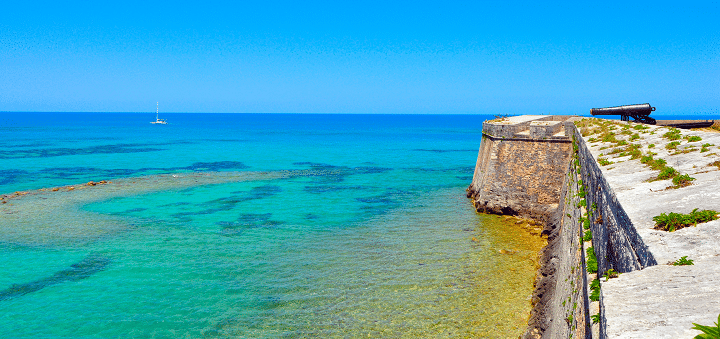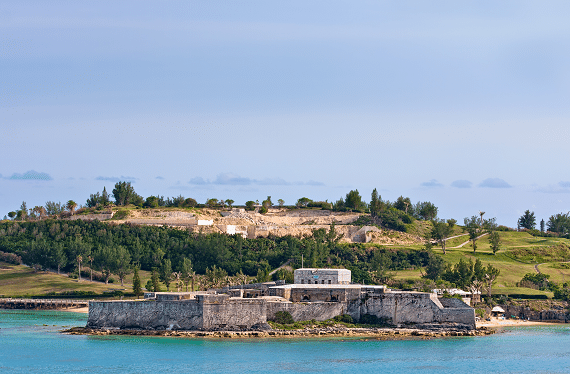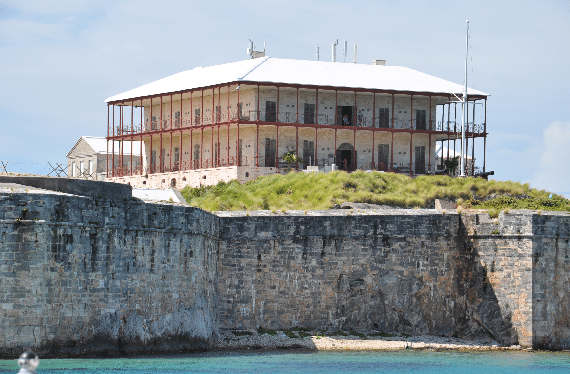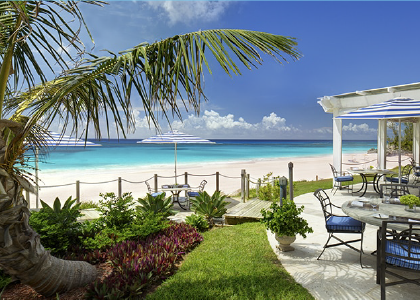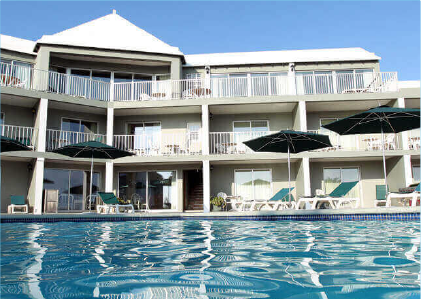Throughout history, Bermuda has played a crucial naval partner to its allies in past wars. Giving it the nickname, Gibraltar of the West. Furthermore, Bermuda was strategically located close to the USA, giving it an ideal place for British soldiers to be located after the USA won their War of Independence. It is also a beautiful and worthy place to protect.
Therefore, it is no surprise that Bermuda has many forts and historic buildings on its hills and shorelines. The first trace of forts in Bermuda can be dated back to 1612, an era which saw the first British settlements entering Bermuda under Governor Richard Moore. However, there was nothing spectacular about the construction or the aesthetics of these forts, since they were primarily built to repel Spanish attacks. Most of the initial forts constructed in Bermuda lay on the North Eastern coastline, since the capital St. George’s Town was located at the Eastern end and lacked natural protections because the barrier reefs were simply not dense enough to prevent ships from passing through. One of the most interesting features of the forts of Bermuda is that while forts around the world were being made from wood, Bermuda made its forts with stones. This allowed the forts of an era bygone to stand tall as centuries passed by while the rest crumbled into ruins and dust.
Efforts were put into constructing forts in Bermuda after the American War of Independence, as Britain began to fortify its settlement to protect itself against possible attacks from America. The Royal Engineers of the British Army and Navy were called upon to fortify the most vulnerable parts of the coastline and remodel existing forts, as the means of warfare had seen complete transformations and had become enhanced technologically.
The British (as well as the US, who arrived much later in 1940 to start building their air and naval base) finally left Bermuda alone in the year 1995, leaving behind about 90 forts scattered across the island.
Many of these forts have been converted into tourist spots today and their magnificent architecture, grand designs and rich folklore have been a source of entertainment for many a traveler.
The Top 17 Forts in Bermuda
Fort Hamilton, Pembroke Parish
Nothing attracts people more than Fort Hamilton, which is known to be one of the most popular forts in Bermuda. Its builders created it with the single-minded goal of protecting Hamilton Harbour from an American invasion. An ironic touch of fate saw the fort becoming obsolete before it could be completed.
Nonetheless, visitors of this historic fort cannot help but to be awed by it as they cross a wooden bridge as the sole entry into this historic fort. Numerous cannons and ramparts form the architecture of the fort, and underground tunnels lead out to a 30-foot wide ditch which surrounds the fort.
As a military fortification, visitors may come to expect heavy guns and underground passageways, but they certainly would not anticipate the lovely gardens that mark the picturesque landscape of Fort Hamilton and the melody that plays out in the summer months (from November to March) by the Bermuda Isles Pipe Band. Its magnificent view over the Hamilton Harbour cements its appeal to tourists of all ages and serves as a promise that no visitor to Fort Hamilton will ever be disappointed.
Admission Fee: NIL
Address: Happy Valley Road, Hamilton City.
Tourist Hours: 9.30 AM to 5:00 PM.
Fort St. Catherine, St. George’s Parish
Sited on the northernmost ground of St. George and between St. Catherine Beach and Achilles Bay is St. Catherine Fort, a structure as grand and popular as it is historically important. It is no easy feat to be one of the most noteworthy forts in Bermuda, and St. Catherine Fort, which lays claim to countless historic artifacts, certainly earns it.
St. Catherine Fort can be traced back to the year 1609, when Sir George Somers planned for its construction. In 1612, Richard Moore, the first governor of Bermuda, gave his approval. As it was initially built out of wood, it had to undergone five renovations before it could be completed.
The renovations went terrifically well, as St. Catherine Fort became a massive and well-defended place, with five 18-ton cannons installed. In its well-maintained interior, replicas of the British Crown jewels and an array of antique weapons are available for the public to view. In one of the lower chambers, ‘George the Ghost’ can be heard and serves as a retelling of old myths – that the fort is haunted. Not only can children expect to be delightfully terrified by ‘George the Ghost’, they are also welcomed as spectators for various theatrical performances.
Admission Fee: Adults – $5, Children – $2.
Address: 15 Coot Point Road, St. Catherine’s Point.
Tourist Hours: 10:00 AM to 4:00 PM.
Scaur Hill Fort Park, Sandys Parish
Scaur Hill Fort was built on a top of a hill in the Somerset region and is accessible by Bus no. 7 and no. 8 from Hamilton City. Fort Scaur was designed with land attacks from the southern shore in mind, so a wide moat and underground passages for defensive maneuvers were built to bolster its defense. Visitors to the fort will remember the breathtaking view of the Great Sound and be drawn to the attractive parkland as a picnic spot, and as a place suitable for hiking and fishing ventures.
Admission Fee: NIL
Address: 107 Somerset Road, Dockyard
Tourist Hours: 9:30 AM to 4:30 PM
Royal Naval Dockyard, Sandys Parish
Built by the Royal Engineers of the British Army in the 1820s and completed only in the year 1860 to ensure Britain’s supremacy during the times of the British Empire, one would not expect the rock-solid limestone Dockyard to be reconverted in modern time into a place for dining, arts and crafts.
Set foot on this fort, knowing that at one point in history, British naval forces sailed off to initiate the infamous raid of Washington, DC. Enter the Bermuda Maritime Museum, recalling that the Dockyard was shut down with the decline of the British Empire and only resurrected in the year 1975 by Queen Elizabeth, who came to oversee the opening of the museum.
Savor the foods and tantalize your taste buds with products from the Bermuda Rum Cake Bakery and other shops and restaurants that sprawl over the Georgian-styled landscape. Finally, forget not the Bermuda Craft Market, which is home to a group of dedicated and gifted crafters selling exquisite souvenirs that will exceed your expectation.
To learn about everything else, visit our detailed page about Dockyard here.
Admission Fee: NIL
Tourist Hours: 10:00 AM to 17:00 PM
Fort Cunningham, St. George’s Parish
Despite being in a fairly damaged condition for a while, Fort Cunningham retains much of its scenic traits and historical significance to be classified as a World Heritage Site. Among the many reasons that give it a grandiose view, it was the Gibraltar Shields which triumph over all other such reasons. Being the only fort in the Western Hemisphere with these iron plates, Fort Cunningham was truly an impregnable fortification and played a strategic role. Even in its current state of disrepair, hopeful visitors can still admire the seven 12.5 inches 238 tonnes guns that sprawled over and once protected the fort.
Admission: Nil
Address: Paget Island, St. George’s Harbour
How to Reach: You need to rent a boat to reach Paget Island.
Ferry Island Fort, St. George’s Parish West
Do not be deceived by the size of Ferry Island and think that no memorable sites mark the said island off Ferry Point. Ferry Island contains the Ferry Island Fort, a garrison that once watched over a single entrance to the main island. It became irrelevant when a causeway was built. Once you gained entry into Ferry Island Fort through the Ferry Reach Park, you will be assured of an unforgettable journey back in time to the eighteenth century, when the fort was at its zenith.
Admission Fee: NIL
Tourist Hours: 10:00 AM to 4:30 PM
Address: Ferry Reach Park, Ferry Road, St. George’s
St. David’s Battery at Great Head Park, St. George’s Parish
St. David’s Battery at Great Head Park can be found at the easterly side of Bermuda. It was constructed in the year 1910 to protect the Narrows Channel. Cannon aficionados will recognize two mounted 6 inch and 9.2 inch caliber Broad Loader guns as the main displays of the fort. Despite its impressive array and size of the guns and cannons, the fort had never engaged in combat. Visitors will find peering down from the cliffs located in Great Head Park an extraordinary experience, and the park itself to be a perfect place to bring your own snacks and beverages and just relax.
Admission Fee: NIL
Tourist Hours: The battery is open to the public on Wednesdays.
Gates Fort, St. George’s Parish
Assuming a myriad of names that include Danvers Fort and Town Cut Fort, Gates Fort is located at the edge of Town Cut channel, a vantage point that watched and prevented enemy ships from sailing into St. George Harbour. Two George III guns are affixed in place at the fort, allowing people to admire and envisage their former glory. Admirers can also take delight in the majestic views of cruise liners smartly navigate the narrow channels that lead into Bermuda.
Admission Fee: NIL
Address: Cut Road, St. George’s
Tourist Hours: 10:00 AM to 4:30 PM
Alexandra Battery, St. George’s Parish
Constructed in the 1860s and armed with the Rifle Muzzle Loader Gun, which was itself fitted with metal flash plates that shielded the gunmen from return fire, Alexandra Battery was a strong garrison, so much that it may come as a surprise that its name was derived from the Princess of Denmark, Princess Alexandra. Adjacent to the fort are several soft sand beaches that become a destination for collectors of beautiful sea glass and sunshine.
Admission Fee: NIL
Tourist Hours: 10:00 AM to 5:00 PM
Address: Barry Road, St. George’s
Whale Bay Fort, Southampton Parish
Constructed to prevent intrusion into a channel called the Hogfish Cut, Whale Bay Fort in the mid-1700s served a vital role in the protection and security of the region, especially that of the Royal Naval Dockyard. While the fort had been lost to the passage of time, visitors can still bake in its former glory by taking a tour around the ruins, barracks and storage rooms. As an additional bonus, the site also affords panorama views of the south shore with Whale Bay beach below – quite unfrequented by other visitors.
Admission Fee: NIL
Tourist Hours: Sunrise to Sunset
Address: Whale Bay Road, Bus Route No. 7 and 8
The Forts of Castle Island, St. George Parish
The Fort of Castle Island or the King’s Castle Stone Fort is touted as the oldest standing stone fort of all the Western Hemisphere, making it unsurprisingly popular with sightseers and holidaymakers. Built with the aim to fend off Spanish attacks, it did fulfil its purpose when it deterred Spanish ships which attempted to infringe the area. Truthfully it was a fluke as the fort had been reduced to a single cannonball in its foregoing attempt.
Along with several other forts that are located in Charles and Southampton Island, Fort of Castle Island has now been classified as a World Heritage Site by the United Nations Educational, Scientific and Cultural Organisation (UNESCO)
Getting There: While you can reach the islands via boats, most of these forts are not accessible to the public.
Gunpoint Port, Sandys Parish
Gunpoint Fort was built on Wreck Hill in the seventeenth century to protect the Western Channel. As the Western Channel is a region with natural defense and difficult passages, Gunpoint Fort can afford to be small in size. Despite that, it was one of the few forts that faced actual combat. The incident happened during the American Revolution in the year 1777 when American warships attacked the fort, forcing the British soldiers to retreat. To date, battle scars can still be seen.
Admission Fee: NIL
Tourist Hours: 10:00 AM to 5:00 PM
Fort George, St. George’s Parish
Fort George was one of the earliest forts to be erected in Bermuda in the year 1612. It housed a single watchtower that was made to guard the northern shores of St. George. An ill-fated day in the year 1619 saw the fort demolished by a hurricane, but the fort was rebuilt and reinstalled with a new tower and gun. More revamps took place, specifically in the years 1788 and 1798, before it was fully established in the year 1840.
In today’s context, the fort still serves as a sort of protection in the region by housing the Bermuda Maritime Operations Centre, Coast Guard Radio Station and the Vessel Traffic Surveillance Centre and conferring vital services such as Search and Rescue operations.
Fort William, St. George’s Parish
Being just one of the oldest forts to be built in Bermuda in the seventeenth century and by Governor Richard Moore who strove to establish the first British Settlement on the island was not rich enough a story for Fort William. An act of treachery was committed on the fort ground that forever marked the history of Bermuda. Bermudians during the American Revolution plotted against the British Empire by stealing a plethora of ammunition from this fort and handing them to the Americans to support their war effort – particularly for the Battle of Bunker Hill. In return, America lifted the embargo on supplies of basic foodstuff to Bermuda. To date, stories of written correspondence between George Washington and Bermudians of the gunpowder theft still permeates the air of the fort.
Tourist Hours: Unfortunately, the interiors of the fort have been inaccessible to the public for many years. However, you can still manage to get a glimpse of the grand architecture’s exteriors.
Fort Albert and Fort Victoria, St. George’s Parish
In the year 1842, Fort Albert and Fort Victoria were constructed on Retreat Hill to defend the north-eastern coastline from naval invaders. Howitzers, mortars, and cannons made up the weaponries that were positioned in the pentagonal-shaped fort that people call Fort Albert. Eighteen 32 pound (14.51 kg) cannons and moats were respectively positioned in and surrounding Fort Victoria, and the fort is also known to house a well with a depth of 124 feet (37.8 m).
However, both these forts have been inaccessible to the public ever since the Hotel Club Med was destroyed in the year 2008.
Fort Popple, St. George’s Parish East
The governor of Bermuda, Alured Popple, deemed in the year 1738 an exigent need to bolster the archaic fortifications of Bermuda. He decided that improvements made to the fortifications of Bermuda should go beyond redevelopment of existing fortifications and established plans for the construction of Fort Popple. Ironically, Fort Popple itself became obsolete with the construction of Fort Cunningham. However, it found a new purpose in today’s context, primarily for its Little Head Park, a place with beautiful scenes and grand vistas serving as its backdrop.
Not accessible to the public.
Address: Little Head Park, St. David’s Island, St. George’s.

